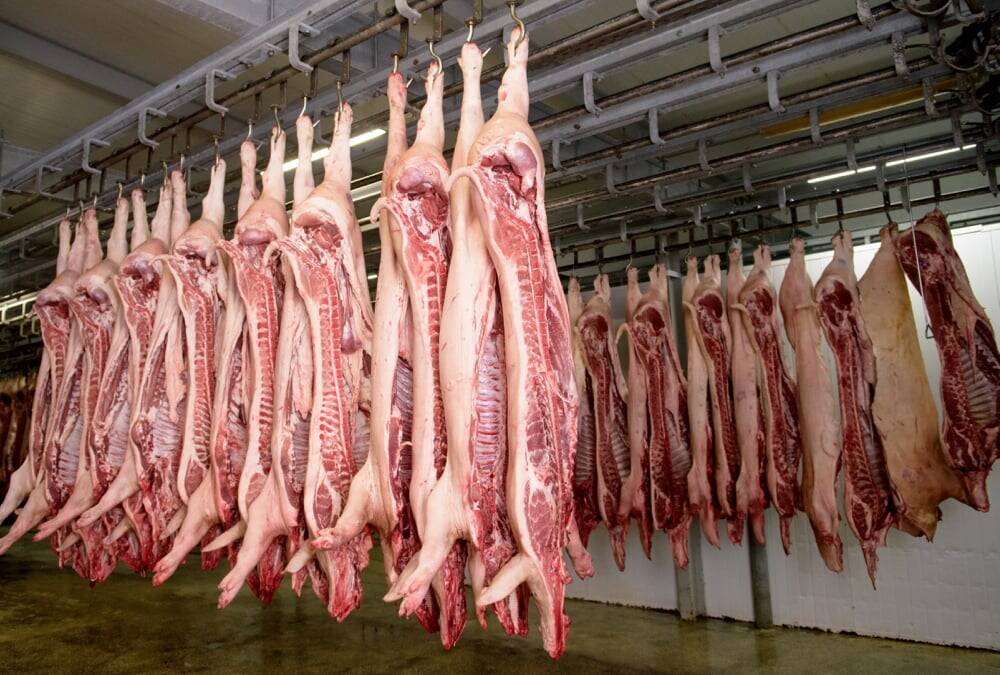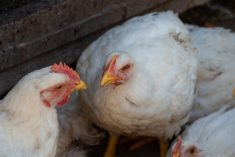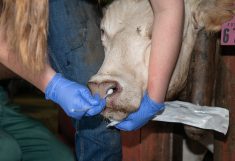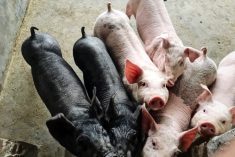As COVID-19 pushes universities to change the way they teach, carry out research and conduct clinical work, the dean of veterinary medicine at the University of Calgary is confident that they can adapt.
The academic system “from coast to coast is very intact,” Dr. Baljit Singh said.
“We will continue to develop new technologies. We will continue to provide new knowledge to the producers. Our education is continuing, albeit on the online platform, not in person.”
Still, Singh acknowledges the enormous challenge wrought by the pandemic. People with more experience than him have been telling him that they’ve never had to “rejig the whole system in such a short period of time,” he said.
Read Also

U.S. livestock: Lean hogs tick down on supply numbers, year-end positioning
Chicago | Reuters – Chicago Mercantile Exchange live cattle and lean hog futures fell while feeder cattle futures rose on…
“It has just been unprecedented.”
Why it matters: Ag research often has a seasonal or time-sensitive component and COVID-19 is hitting at a critical time for many projects. Some projects have been underway for months or years, representing a large investment of money and time. As well, the animals involved will still need care. Universities are figuring out which activities will have to be delayed, which will carry on, and how they can carry on while minimizing risk to faculty, staff and graduate students.
On the research front, universities across the country have been evaluating which research components would create a major loss to the program if cancelled, Singh said.
For example, research on COVID-19 is critical. So are the prion biology research groups in Calgary and Edmonton, which were established after BSE shuttered international borders. Calving season is underway, and so faculty members will continue collecting data for those research projects. And long-term experiments that began months ago, and require sampling from animals at specific times, would also represent a major loss if shut down.
The University of Calgary’s faculty of veterinary medicine (UCVM) has also sought input from stakeholders on research. Most of their work is in disease modelling, feedlot health services, clinical and applied research. Much of that research focuses on infectious diseases, and experimental models are typically done on-site at the university’s Spy Hill campus.
Administrators have also considered the health of staff and students at W.A. Ranches, a working ranch donated to the university for teaching and research. Singh notes that it’s hard to know who might be carrying the virus, and so they need to have “a great deal of caution.”
“So I think it’s very challenging. But I believe some of our research will keep on going,” he says.
So far, UCVM has greenlit the following projects:
- A Margaret Gunn Endowment for Animal Research-funded project set for the calving season, involving Drs. Ed Pajor, Jennifer Pearson, and Claire Windeyer.
- A Beef Cattle Research Council-funded project to develop a calf health risk assessment tool, involving Drs. Ed Pajor, and Claire Windeyer, along with a researcher at Saskatoon’s Western College of Veterinary Medicine (WCVM).
- A project looking at colostrum intervention strategies in newborns and the effect of colostrum storage methods on colostrum quality. The project involves Drs. Michel Levy, Ed Pajor, Claire Windeyer and Robin Yates, along with a researcher at WCVM.
- A trial looking at optimizing calf health around weaning, and antimicrobial use in feedlots, funded by Alberta Agriculture and Food and MIF. Drs. Karin Orsel, Ed Pajor and Frank van der Meer are involved, along with researchers from University of Lethbridge, WCVM and Olds College.
- Projects at the university’s new Simpson Centre for Agricultural and Food Innovation and Public Education that focus on policy and data analysis. The university also seeks a director for the centre.
However, UCVM is also suspending some projects. For example, new experiments that can be delayed will be suspended until it’s safe to resume. So far, the delayed research includes:
- A project on the use of bacteriophage-derived lysins in combatting multi-drug resistant pathogens that cause bovine respiratory disease (Dr. Dongyan Nui).
- An experimental infection model to study pain and diagnostics in Developmental Duplication (DD)-affected beef cattle (Dr. Ed Pajor).
- A project describing beef bull behaviour using remote access technology as potential indicators of bull siring capacity (Dr. Ed Pajor).
- Dr. James Wasmuth’s lab project looking at new drugs for cattle parasites. Researchers had recently started testing new compounds. Wasmuth has also suspended his work sequencing cattle parasite genomes. However, he’s still able to continue some of his work to find more drug targets.
How will COVID-19 affect ag research in the long run? Researchers don’t yet know what type of health, animal care and research protocols they’ll have to implement, or for how long, Singh said. If the pandemic passes in the next two or three months, it will mean researchers have lost some time, but everyone will be able to get back to a normal life within the next four to five months.
But if the pandemic lingers longer, requiring prolonged social distancing, they will have to put their heads together, Singh said, to decide “what type of research of research is most critical, that can go forward under the new guidelines, circumstances, public health advisories. And what is it that we need to deliver to the producers?”
Renewed focus on food
COVID-19 has brought a renewed focus on food, Singh said, with shoppers emptying grocery store shelves, and reports of price-gouging making headlines.
We need to consider that as the pandemic has pressured the just-in-time food supply system, people have behaved as though they won’t have food in a week or two, he added.
We need to assure Canadians that during a pandemic or natural calamity, people will be able to set food on their tables every day without “disruptions, price-gouging and exploitation,” says Singh.
All levels of government need to prioritize the food production system and supply chain, and stakeholders such as producers groups need to work together to place that priority in front of political leaders, he says.
A supply of healthy food “is a fundamental priority,” Singh said. “Families, at home, they cannot go out. And their ability to make a livelihood goes down.
“I do not worry that much about three, four, five month loss of time in a research project. We can recover that…What worries me now is that this is the first time we’ve had a national pandemic story and our food supplies are under stress. We need to really do a better job at this collectively.”
For those Canadians who have questions about how the ag sector produces food, now is the time to explain how it’s done, he added. It’s time to say, “we want you to be partners with us. Not questioning and attacking the food production system in this country, but to work together to create a better food production future for everybody.”
— Lisa Guenther is the editor of Canadian Cattlemen.
















